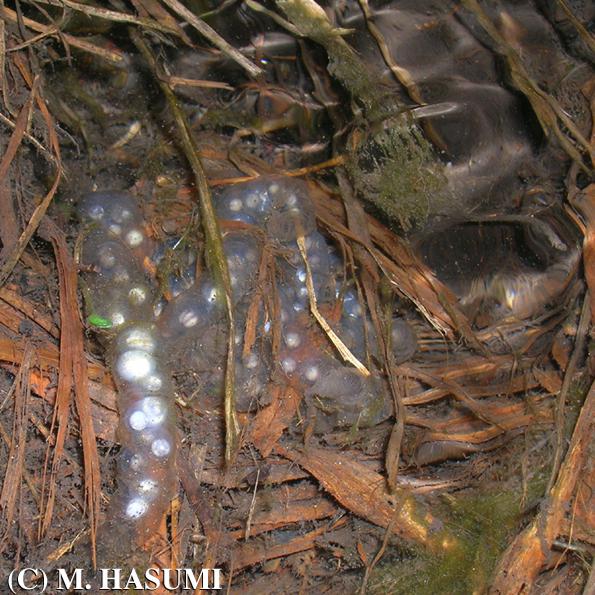
These seven pairs of egg sacs included many unfertilized eggs (numbers of embryos/unfertilized eggs in each pair: 15/3, 20/3; 20/10, 24/13; 21/1, 22/6; 22/8, 26/8; 26/6, 26/11; 28/1, 30/16; 36/11, 40/7) among 15-40 embryos from the morula stage to the early tail-bud stage, five of them being at the neural-fold stage. The seminal fluid discharged from the male's cloacal opening when "spawning" (i.e., simultaneous extrusion of sperm and oviposition) occurred was estimated to be carried away due to the rapid stream, which resulted in the appearance of a great number of unfertilized eggs.
At the time of examination, a second-year juvenile of H. hidamontanus was found unexpectedly in the periphery of the pool, which might be carried in from somewhere. Two aquatic-phase males and five pairs of egg sacs of this species were found newly in a drainage canal dug out near the pool. A series of choruses by males of the treefrog Rhacophorus schlegelii were harmonized around the open field.
Accompanied Research Collaborators (alphabetical order): Masaichi Kakegawa (Tokyo Metropolitan Komatsugawa Senior High School), Fujio Kishi and Yuko Saikawa (Shirouma Association of Naturalists), and Koji Takada (Nagano Chausuyama Zoo).